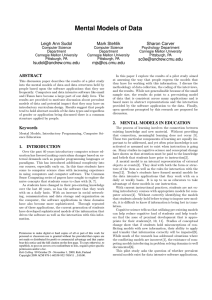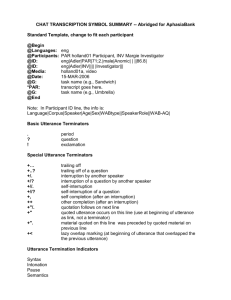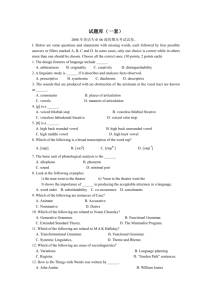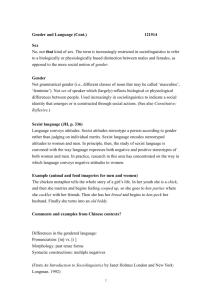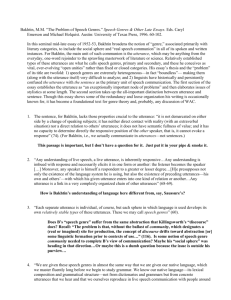Supplementary Data
advertisement
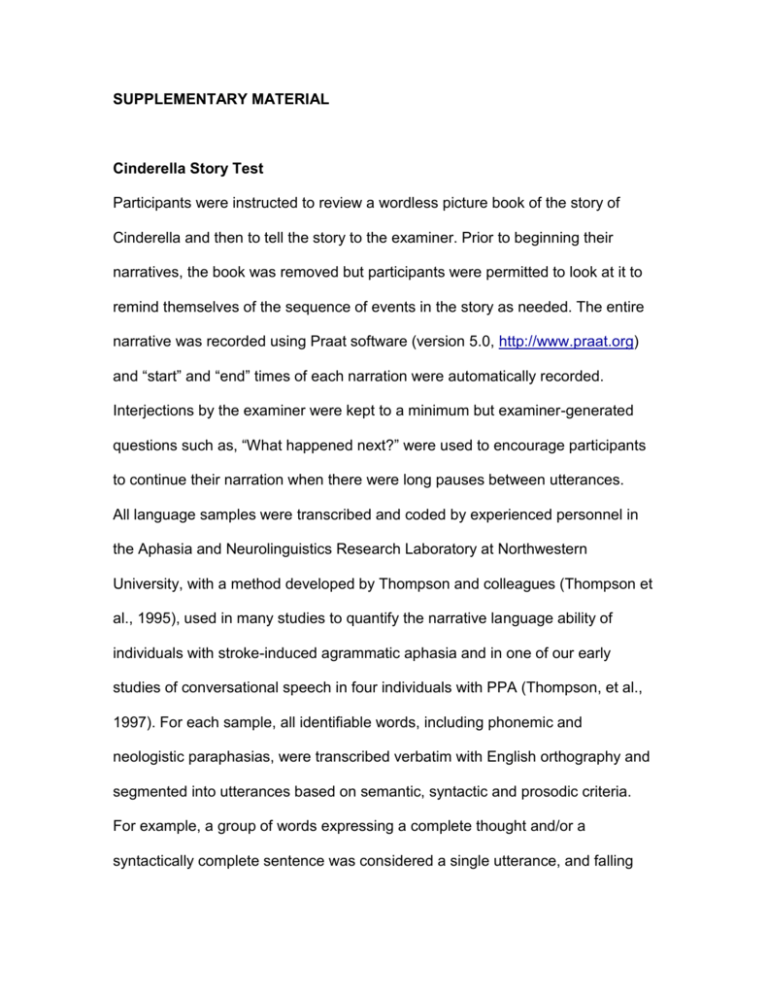
SUPPLEMENTARY MATERIAL Cinderella Story Test Participants were instructed to review a wordless picture book of the story of Cinderella and then to tell the story to the examiner. Prior to beginning their narratives, the book was removed but participants were permitted to look at it to remind themselves of the sequence of events in the story as needed. The entire narrative was recorded using Praat software (version 5.0, http://www.praat.org) and “start” and “end” times of each narration were automatically recorded. Interjections by the examiner were kept to a minimum but examiner-generated questions such as, “What happened next?” were used to encourage participants to continue their narration when there were long pauses between utterances. All language samples were transcribed and coded by experienced personnel in the Aphasia and Neurolinguistics Research Laboratory at Northwestern University, with a method developed by Thompson and colleagues (Thompson et al., 1995), used in many studies to quantify the narrative language ability of individuals with stroke-induced agrammatic aphasia and in one of our early studies of conversational speech in four individuals with PPA (Thompson, et al., 1997). For each sample, all identifiable words, including phonemic and neologistic paraphasias, were transcribed verbatim with English orthography and segmented into utterances based on semantic, syntactic and prosodic criteria. For example, a group of words expressing a complete thought and/or a syntactically complete sentence was considered a single utterance, and falling intonation and/or pauses often suggested its end. Importantly, however, both grammatical and ungrammatical strings of words were considered utterances and pauses alone were not used to segment utterances. When utterance boundaries were unclear, boundaries were placed to create shorter rather than longer utterances. Unintelligible words and utterances (marked with x’s) as well as interjections (e.g., uh, um), and repeated words and phrases within an utterance, with exception of repetitions used for emphatic purposes (e.g., I’ve been working and working and working), were coded in brackets (e.g., I’ve been [working working working] working) and were not analyzed. Each transcribed utterance then was coded at four levels: the utterance, lexical, bound morpheme, and verb argument structure level. At the utterance level an utterance code was assigned, denoting whether or not the utterance comprised a sentence or a non-sentence. In order to be considered a sentence, production of a verb in the utterance was required. Each utterance coded as a sentence then was coded as “grammatical” or “ungrammatical”. The lexical level identified the grammatical class of all the words produced in each utterance, including both open class (i.e., nouns, verbs, adjectives, adverbs) and closed class (e.g., determiners, prepositions, auxiliaries) words. At the bound morpheme level, verb tense (both regular and irregular) and noun plural markers were coded. Omissions, additions, and substitutions of bound morphemes were also indicated using unique codes for each. Finally, at the verb argument structure level the accuracy of verb argument structure production was coded for each verb produced. All language samples were independently transcribed and coded by two individuals. The transcriptions were compared in order to determine reliability of word entry and utterance segmentation. Overall inter-transcriber point-to-point agreement was 98% for transcription and 96% for utterance segmentation. Any disagreements were resolved by re-listening to the samples in question and discussion between the transcribers. Intercoder point-to-point agreement also was calculated for each code. Overall agreement ranged from 87% to 90% with an overall mean of 88.5%. Disagreements were resolved by discussion between coders. RESULTS Operator-independent analysis One way ANOVA showed between-groups differences (controls, logopenic, agrammatic/non-fluent, semantic) that were statistically significant for the FA of the frontal aslant tract (p=0.015) and uncinate (p=0.004) and the RaD of the of the frontal aslant tract (p=0.007) and the uncinate (p<0.001). Post-hoc analysis of the frontal aslant tract showed that the FA of the non-fluent/agrammatic group differed significantly from the controls (p=0.037) and logopenic group (p=0.019). A trend towards significance was also found in the difference between the nonfluent/agrammatic group and the semantic groups (p=0.08). Statistically significant difference were also found between the non-fluent/agrammatic and the control group for the RaD of the frontal aslant tract (p=0.004). Post-hoc analysis of the uncinate fasciculus showed that semantic group had lower FA compared to controls (p=0.006) and a near to significant difference compared to logopenic group (p=0.069). Differences in the RaD of the uncinate fasciculus were highly significant (p<0.001) between the semantic group and all other groups. A correlation analysis was performed between the FA and RaD of the Frontal aslant tract and uncinate fasciculus and the neuropsychological performances. Statistically significant correlation was found between FA of the frontal aslant tract and verbal fluency performances measured by MLU (Pearson’s correlation 0.722, p<001) and WPM (Pearson’s correlation 0.725, p<001). An inverse correlation was found between the RaD of the frontal aslant tract and verbal fluency performances measured by MLU (Pearson’s correlation -0.658, p<001) and WPM (Pearson’s correlation -0.484, p=017). An inverse correlation was also found between the RaD of the uncinate fasciculus, and performances on the BNT (Pearson’s correlation -0.526, p=001) and PPVT (Pearson’s correlation -0.657, p<0.001). REFERENCES Thompson CK, Ballard KJ, Tait ME, et al. Patterns of language decline in nonfluent primary progressive aphasia. Aphasiology 1997; 11:297-321. Thompson CK, Shapiro LP, Tait ME, et al. A system for the linguistic analysis of agrammatic language production. Brain Lang 1995; 51:124-129.
